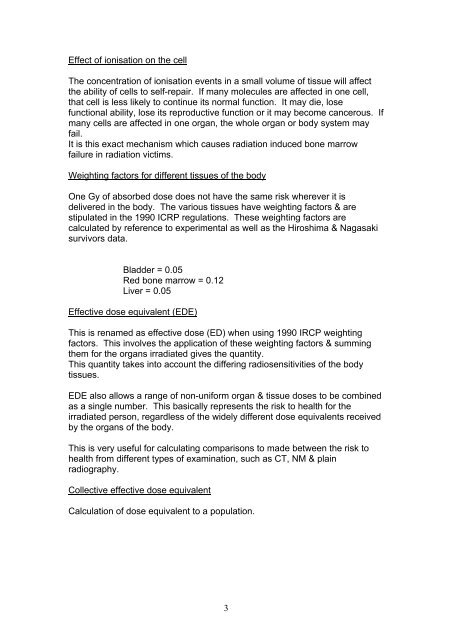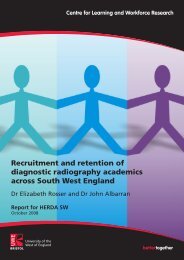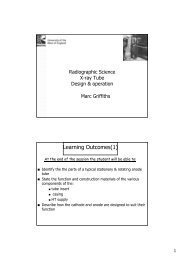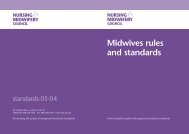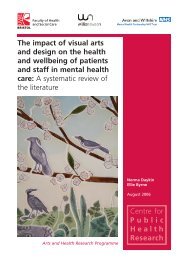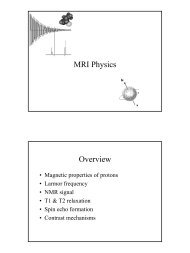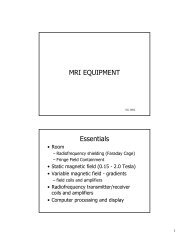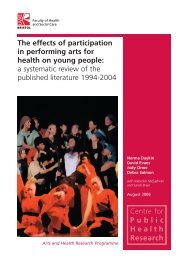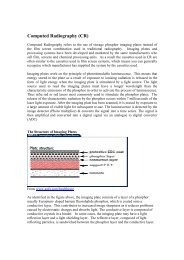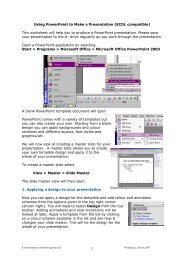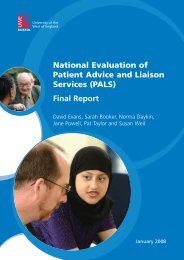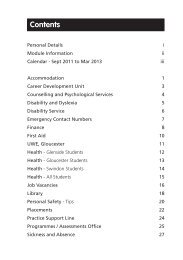Dosimetry introduction
Dosimetry introduction
Dosimetry introduction
You also want an ePaper? Increase the reach of your titles
YUMPU automatically turns print PDFs into web optimized ePapers that Google loves.
Effect of ionisation on the cellThe concentration of ionisation events in a small volume of tissue will affectthe ability of cells to self-repair. If many molecules are affected in one cell,that cell is less likely to continue its normal function. It may die, losefunctional ability, lose its reproductive function or it may become cancerous. Ifmany cells are affected in one organ, the whole organ or body system mayfail.It is this exact mechanism which causes radiation induced bone marrowfailure in radiation victims.Weighting factors for different tissues of the bodyOne Gy of absorbed dose does not have the same risk wherever it isdelivered in the body. The various tissues have weighting factors & arestipulated in the 1990 ICRP regulations. These weighting factors arecalculated by reference to experimental as well as the Hiroshima & Nagasakisurvivors data.Bladder = 0.05Red bone marrow = 0.12Liver = 0.05Effective dose equivalent (EDE)This is renamed as effective dose (ED) when using 1990 IRCP weightingfactors. This involves the application of these weighting factors & summingthem for the organs irradiated gives the quantity.This quantity takes into account the differing radiosensitivities of the bodytissues.EDE also allows a range of non-uniform organ & tissue doses to be combinedas a single number. This basically represents the risk to health for theirradiated person, regardless of the widely different dose equivalents receivedby the organs of the body.This is very useful for calculating comparisons to made between the risk tohealth from different types of examination, such as CT, NM & plainradiography.Collective effective dose equivalentCalculation of dose equivalent to a population.3


